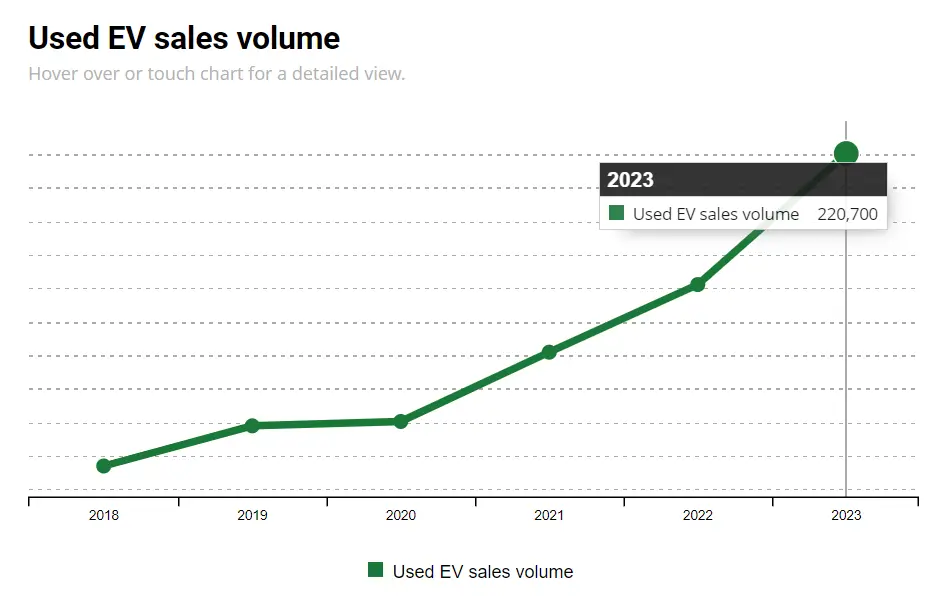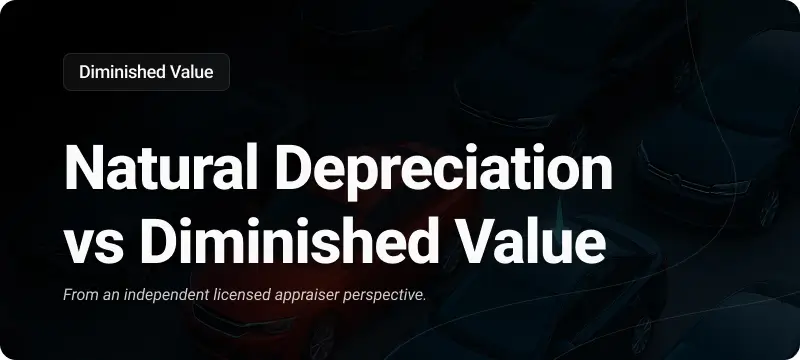Once a niche corner of the automotive world, electric vehicles (EVs) have surged into the spotlight, transforming from a rare curiosity into a burgeoning market force. This transition has not been without its challenges, as used EV prices have proven to be as unpredictable as they are revolutionary.
In the past year alone, the market witnessed a dramatic shift, with used EV prices closely mirroring the fluctuations of their new counterparts, particularly in response to significant price adjustments from manufacturers like Tesla.
Watts Up with Used EV Prices? A 2023 Market Analysis (PDF)
The Heart of Volatility: Tracking the Price Currents
The dynamics of the used EV market are complex, influenced by a myriad of factors ranging from new EV pricing strategies to governmental incentives. In 2023, despite making up less than 1% of the used-vehicle retail market, the sale of 180,000 used EVs marked a pivotal moment.
This period saw the average cost of premium used electric cars pegged at $43,706, starkly contrasting with $40,465 for similar gasoline-powered vehicles. However, this landscape is rapidly changing, with used EV prices seeing an average decline of 30%, a testament to the market’s sensitivity to new EV price adjustments.
Navigating Through the Fog: The Affordability Conundrum
Affordability remains a critical hurdle in the used EV market. The high cost of EV components, particularly batteries, has traditionally kept these vehicles in a premium bracket, out of reach for the average consumer. Yet, there’s a glimmer of hope.
The introduction of more affordable new EVs is set to reshape the used market, potentially making electric vehicles accessible to a wider audience. This is a crucial development in a market still wrestling with the challenge of evaluating EVs, particularly in terms of battery health and longevity.

Infrastructure and Innovation
As the used EV market continues to mature, the need for a comprehensive support infrastructure becomes increasingly apparent. From refurbishment to valuation, the industry faces unique challenges that require innovative solutions.
Dealerships and industry players are already taking steps to adapt, developing strategies to manage the risks associated with price volatility, and to refine their approach to EV valuation. This proactive stance is essential for harnessing the opportunities presented by the growing market for used electric vehicles.
Conclusion: Looking Ahead
The journey of the used EV market is emblematic of the broader shifts occurring within the automotive industry. As we navigate through the uncertainties and opportunities of this evolving landscape, the potential for sustainable mobility becomes ever more tangible. Yet, the question remains: How will the market evolve to make electric vehicles not just a vision of the future, but a practical choice for today’s consumers?



